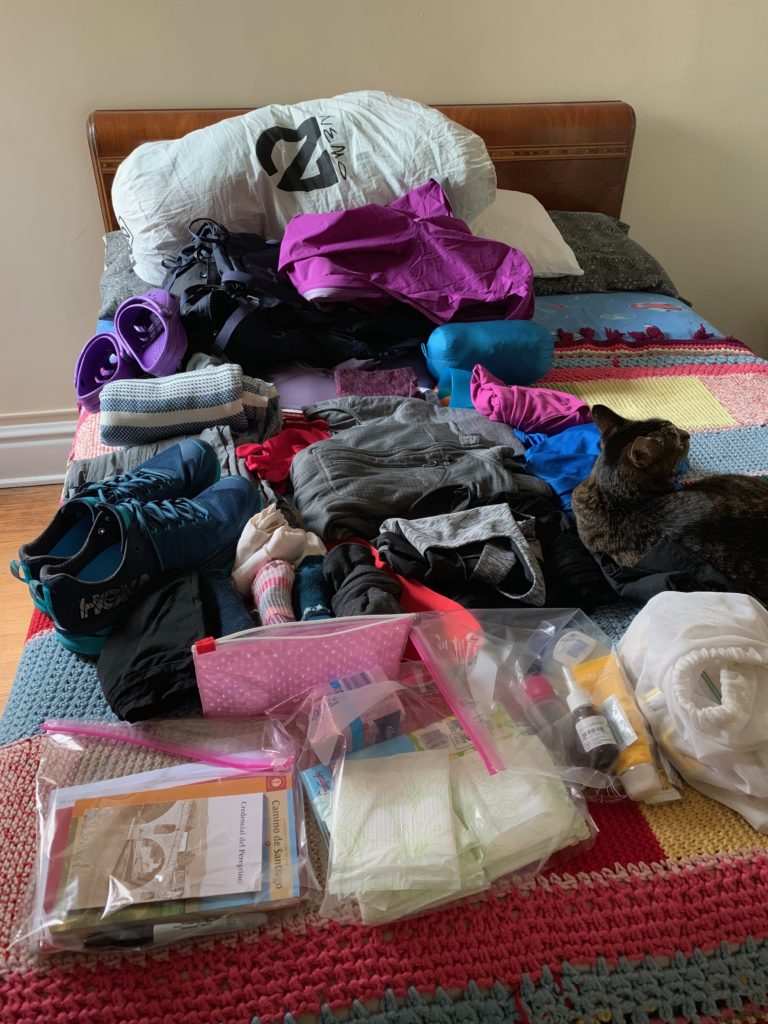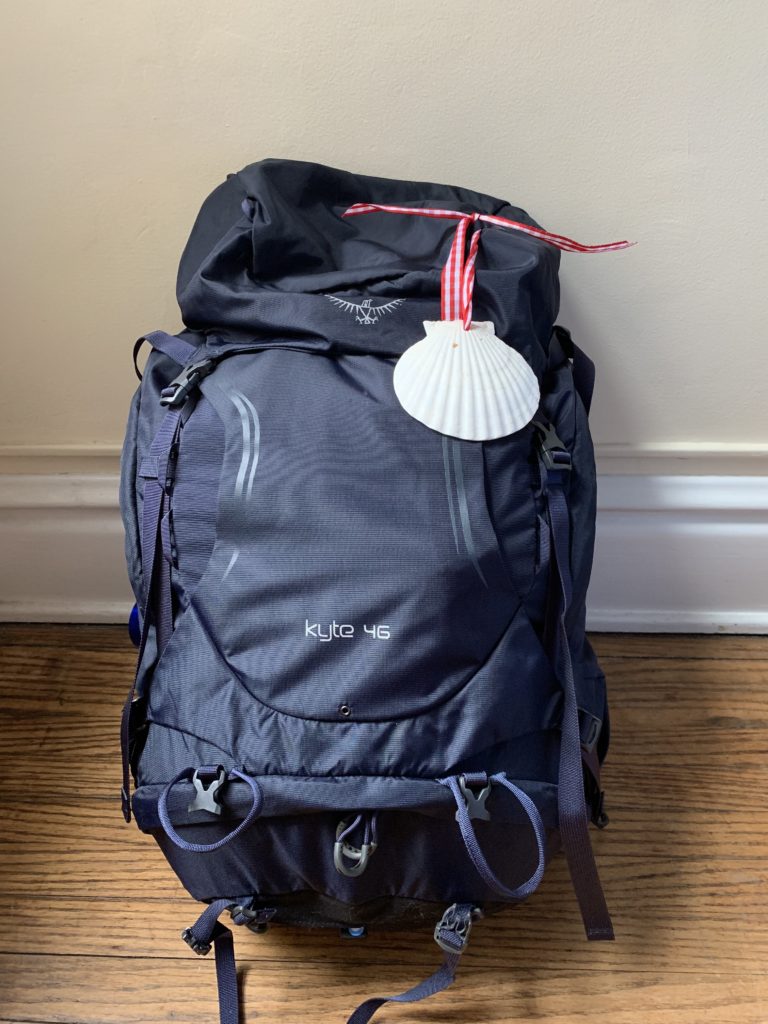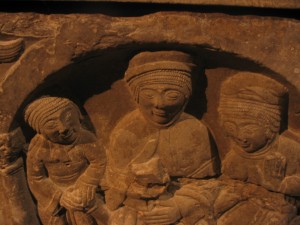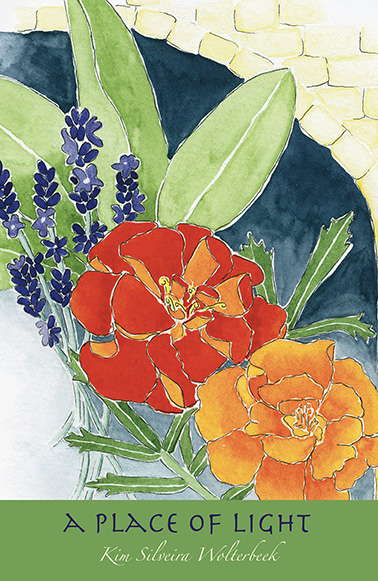That’s the plan.
Today I fly to Pamplona via Madrid and on Monday I begin my first stage on the Camino Francés. I’ll be walking for thirty days, trying to reach Santiago de Compostela, where I will give the Apostle a big hug and then come home.
Why am I doing it? Maybe the real question is, what took me so long? I’m a historian of medieval Spain, but my interest in the Camino has always been more personal than professional. I first learned about it when my mother gave me (I think it was a loan, but I never gave it back, ha ha) Laurie Dennett’s A Hug for the Apostle when I was in graduate school. My doctoral adviser was more bemused by my Camino interests than approving, but when he retired, he have me his copy of Gerogiana Goddard King’s three-volume The Way of Saint James. When I began teaching at Chicago, one of my first classes was on pilgrimage across religious traditions, and I also taught classes on medieval pilgrimage, using Nancy Frey’s wonderful Pilgrim Stories: On and Off the Road to Santiago. I even published a historical novel about the twelfth-century pilgrimage that used the creation of the well-known Pilgrim’s Guide to Compostela as part of its frame.
I think that was part of the problem. I know too much about the history of this pilgrimage to be moved by druids and grails and magical swords. I know all about rites of passage and liminoid phenomena and communitas and what happens when you abandon your old structures and social bonds. Was I going to be the grumpy pilgrim in the corner rolling my eyes when people get a bit new age for my tastes and resisting camino families, angels etc? (Probably) Who wants that? Another reason was that there was so much in Spain that I wanted to visit, and see, and think about. I couldn’t bear the thought of being on the Camino 2km away from somewhere I wanted visit and being too tired to walk there and back. And, well, I’m okay now but I used to get really homesick.
So why now? I finally have the time. It was telling that the first moment I had time to do this, this was the first thing I thought of doing. I have two goals in mind. First is that I want to see if I can do it, if I can walk that far. It will be about 700 km. Second and more important is that I want to see what it feels like to move through this landscape at foot pace. What do I see? What do I learn?
I don’t know if I will keep posting when I am on my journey or if this will be it, but you can follow me on Instagram where I will probably/possibly post some photos at least. or not. How about a couple of photos now? Here’s pretty much everything I plan to bring. (Except the cat. I am not bringing the cat.)

“Yadda Yadda, you’re pack is too big, yadda yadda, you’ve got too much stuff.” La la la I can’t hear you. Here’s the full pack.

I’ll watch out for trolls.


